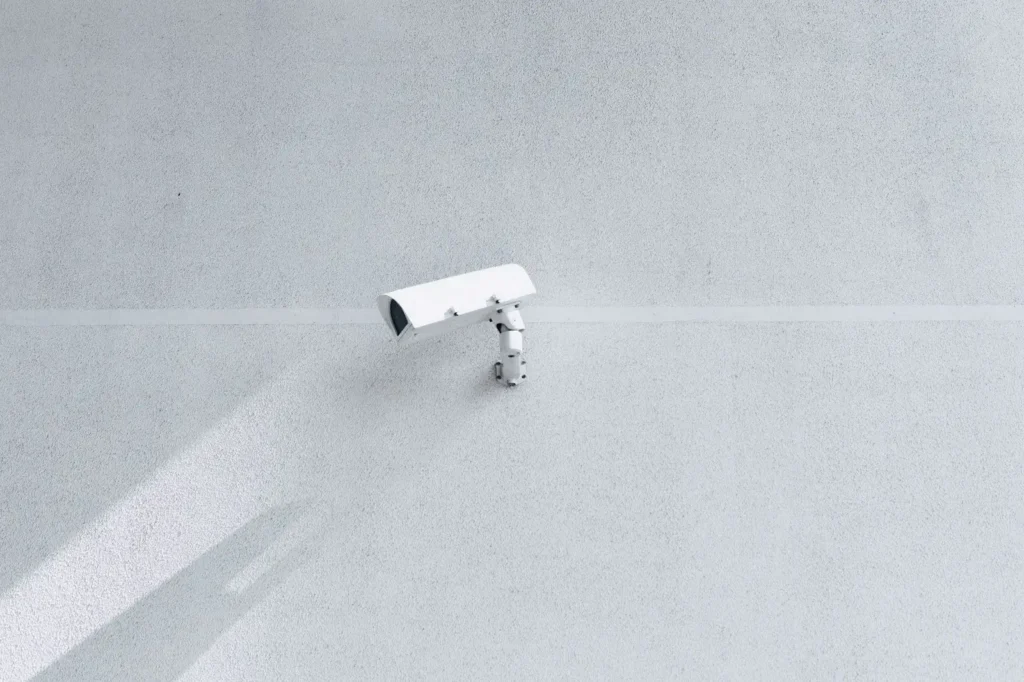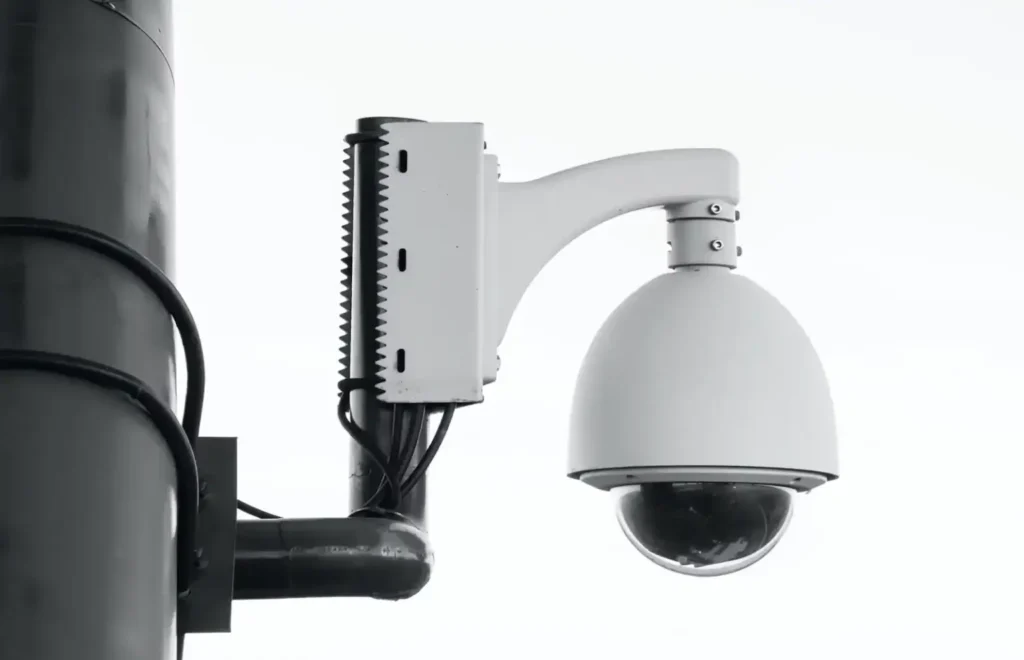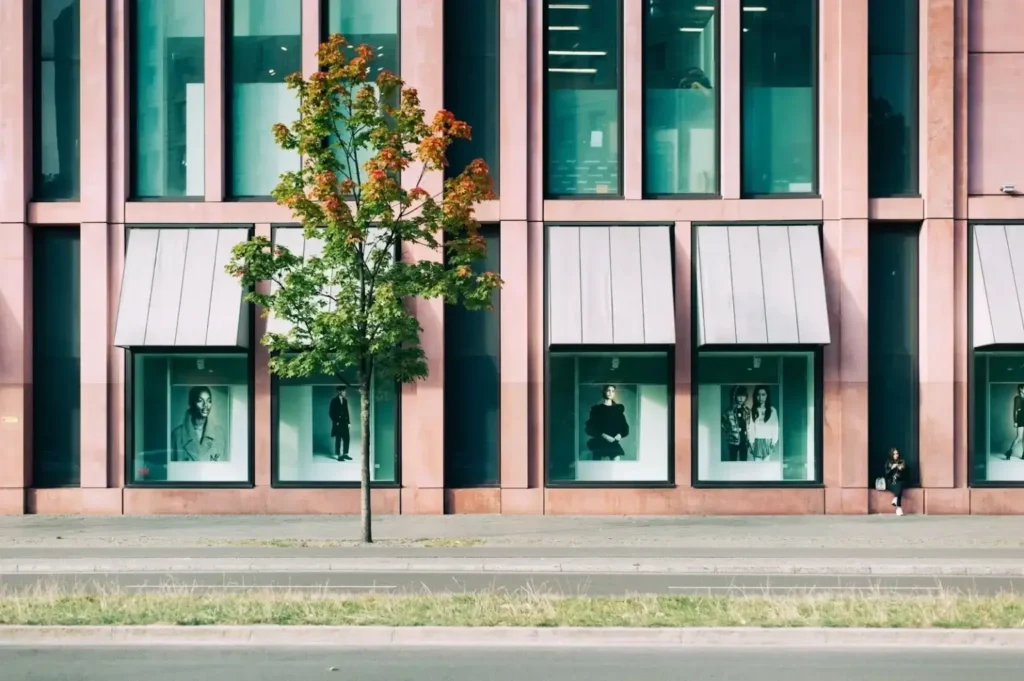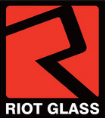Written By: Brad Campbell | August 14, 2025
If you operate a retail store, protecting your employees, merchandise, and physical storefront is likely a constant concern. From everyday shoplifting to more serious threats like forced entry, burglary, smash-and-grab theft, rioting, looting, and vandalism, the risks facing retailers are real, and they’re growing.
Whether we’re talking about jewelry stores and luxury fashion boutiques or 24-hour convenience stores and cannabis dispensaries, one of the most common tools used to secure retail locations is the trusty retail surveillance system. Security cameras are widely viewed as a first line of defense. But how effective are they really?
The truth is that while surveillance systems play an important role in deterring and documenting criminal behavior, they cannot physically stop crimes from happening. That’s why many retail businesses are turning to a multi-layered security strategy, combining visual deterrents like cameras with physical barriers like Riot Glass to prevent entry altogether.
Let’s explore the facts behind retail surveillance systems, including what they do well, where they fall short, and how to build a smarter, more robust security solution.
Retail surveillance cameras are everywhere, and for good reason: they work as a visual deterrent and a source of valuable evidence.
The mere presence of visible retail surveillance system cameras can dissuade a would-be thief. Knowing they’re being watched and that their actions are being recorded makes many criminals think twice.

Even inexpensive dummy cameras or visibly outdated systems can create a psychological barrier. While fake cameras don’t offer any real protection or evidence, they highlight just how powerful the idea of surveillance can be in reducing opportunistic theft.
If a security incident does occur, footage from a properly placed surveillance system can become invaluable.
In short, cameras offer peace of mind and accountability, but that doesn’t mean they offer true protection.
Despite their many benefits, surveillance cameras have major limitations when it comes to preventing physical threats.
A security camera can show you a break-in, but it can’t stop it. In the case of smash-and-grab robberies, a thief (or group of thieves) might be in and out of your store in under a minute, grabbing high-value merchandise and leaving behind broken doors, windows, and display cases. The footage might help later, but the damage is already done.
Cameras are only as useful as the footage they capture. Unfortunately, criminals often wear masks, hoodies, or other disguises to conceal their identity.
Worse yet, in situations involving rioting and looting, large crowds and rapid destruction can render surveillance footage nearly useless. During these chaotic events, camera views may be obstructed, or systems can be disabled or destroyed.
Modern surveillance systems can be monitored in real-time, but unless you have a 24/7 security team ready to respond at a moment’s notice, criminals may already be gone before anyone notices. Even with advanced systems using AI alerts, response time lags behind the speed of criminal activity.

If your security plan relies solely on cameras, you’re leaving a major vulnerability wide open. That’s why more retailers are pairing their retail surveillance system with physical security solutions, especially at key access points like glass entryway doors and storefront windows.
Riot Glass retrofit security glazing systems are designed to resist forced entry attempts using tools like crowbars, bricks, bats, and even bullets, depending on the glazing’s specific composition and security rating.
Unlike traditional tempered glass, which is frequently used in retail storefronts yet shatters easily, Riot Glass stays firmly in place even when struck repeatedly. It turns vulnerable glass storefronts into hardened barriers that criminals can’t easily penetrate.
Because Riot Glass can’t be easily breached, smash-and-grab attempts often fail completely. Criminals are forced to either flee the scene or spend significantly more time trying to gain entry — time that increases their risk of being caught. Its resistance to sustained attacks makes it a smart solution for businesses concerned about riots or civil unrest as well.
Security professionals agree that the best approach to retail protection is a layered security system where each element reinforces the next. Surveillance systems and Riot Glass work together to:
This combination of physical and visual deterrents transforms your store from an easy target into a hard one. When criminals encounter a retail location with reinforced windows and doors, their plans often unravel quickly.
Riot Glass visibly resists impact, refusing to shatter or give way under the types of strikes that would normally result in immediate entry. In many attempted break-ins, especially those involving smash-and-grab tactics, this resistance is enough to stop the crime in its tracks.
Thieves typically operate under tight time constraints — they want to get in and out fast. When their entry attempts are met with unexpected resistance, they’re far more likely to flee before drawing attention or being caught.
Meanwhile, surveillance cameras are capturing the entire event, documenting the suspect’s actions and behavior, which can be critical for police investigations and insurance claims. Together, the systems create a proactive defense, reducing the chance of loss, minimizing property damage, and helping ensure business continuity, even in high-risk environments.

Crime targeting retail businesses is on the rise in many areas. From organized retail theft rings to flash-mob-style smash-and-grab or looting events, today’s threats are more aggressive and coordinated than ever.
At the same time, retailers are dealing with slimmer margins and higher costs, making it even more critical to protect assets and avoid downtime due to damage or theft.
Investing in a proactive physical security solution like Riot Glass, combined with your existing retail surveillance system, offers comprehensive protection for your inventory, your employees, your customers, and your ability to stay open for business.
While retail surveillance systems are an essential tool, they are not enough on their own to prevent property damage or protect against determined criminals.
Combining visible surveillance with physical forced entry protection like Riot Glass helps retail businesses take a proactive stance against both opportunistic theft and organized crime.
Don’t wait until a costly break-in forces you to rethink your security strategy — take action now to build a safer, stronger retail environment. Contact Riot Glass today for a free consultation.

HOW CAN WE HELP YOU?
